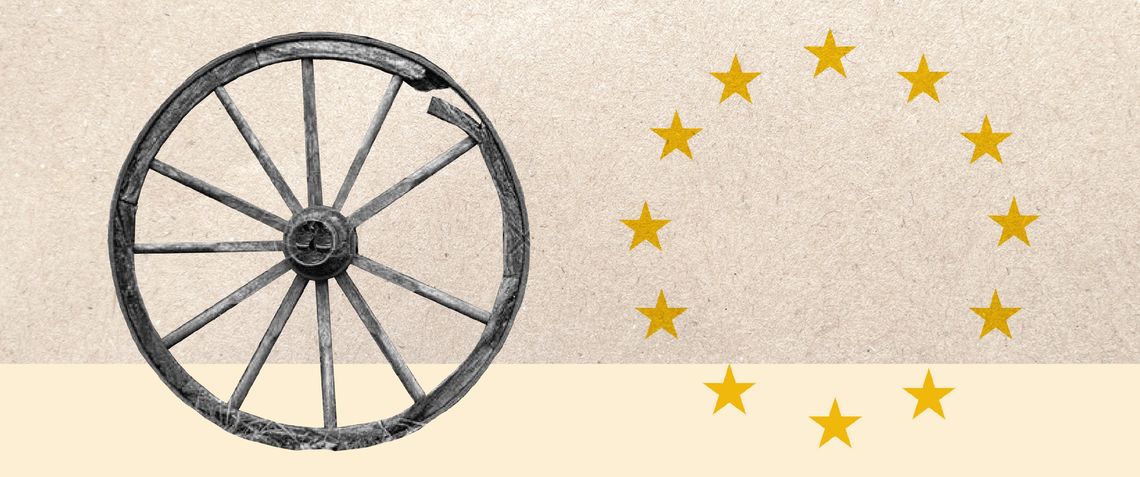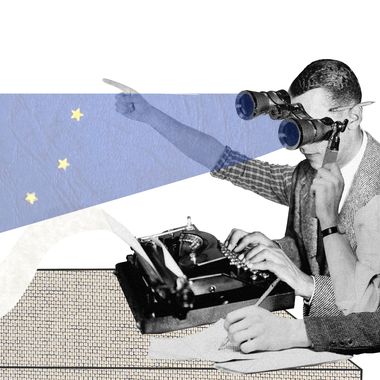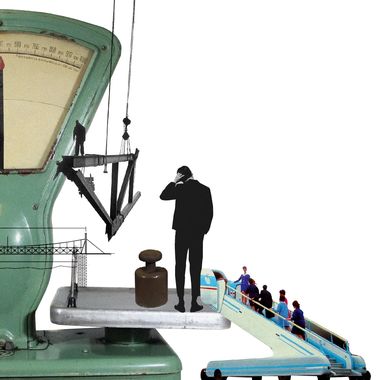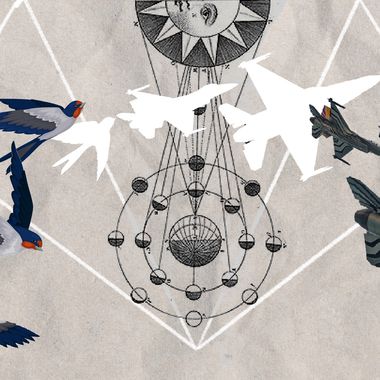
Illustration by Armine Shahbazyan.
On March 1, 2021, the Comprehensive and Enhanced Partnership Agreement (CEPA) between the European Union (EU) and the Republic of Armenia entered into force. It is a landmark event between two partners that can serve as a stepping stone to further develop and extend the scope of the partnership. However, there are many myths and misunderstandings about CEPA.
First and foremost, CEPA is not an Association Agreement (AA). It’s a well-known fact that, in November 2013, Armenia should have signed an AA and Deep and Comprehensive Free Trade Agreement (DCFTA) with the EU. However, after a sudden u-turn in policy, Armenia became a member of the Eurasian Economic Union (EAEU), canceling the signing of the AA and DCFTA with the EU. However, 2017 marked a renewal in relations when the two sides announced the signing of a new Agreement - CEPA - at the Eastern Partnership Forum in Brussels on November 24, 2017. This agreement is indeed quite comprehensive, encompassing 1000 pages of provisions in a wide array of sectors, including energy, education, business and of course democracy promotion and rule of law.
It has sometimes been called an “Association Agreement light” or an Association Agreement without the DCFTA. However, in the legal pyramid of the EU, it is not included in the category of Association Agreements because the legal basis of the document is not identical to the AA. The legal basis of the AA is Article 217 of the Treaty of the Functioning of the EU (TFEU). However, in the case of CEPA, the legal bases are Article 37 of the Treaty of the EU, Article 207 of the TFEU and Article 209 of the TFEU, read in conjunction with Article 218(6)(a) of the TFEU and the second subparagraph of Article 218(8) of the TFEU. However, it could be said that CEPA was based on the draft of Armenia's former AA, which is one of the reasons for its sophisticated character. One of the signs which indicate the comprehensive nature of the agreement is the convergence of Armenian legislation into the EU acquis, the body of common rights and obligations that are binding on all EU countries as EU Members. Usually, harmonization with the EU acquis is suggested to applicant countries aspiring to EU membership.
In Article 2 of the legal elements of the agreement, it is mentioned that “The Agreement includes the EU’s standard political clauses on human rights, the international criminal courts, weapons of mass destruction, small arms and light weapons, and counter-terrorism.” It also contains provisions on cooperation in areas such as transport, energy, health, the environment, climate change, taxation, education and culture, employment and social affairs, banking and insurance, industrial policy, agriculture and rural development, tourism, research and innovation and mining. In addition, it covers legal cooperation, the rule of law, combating money laundering and terrorist financing, and fighting organised crime and corruption. Later on, it speaks about the gradual convergence of Armenian law to the EU acquis in certain sectors, fully taking into account Armenia’s obligations as a member of the Eurasian Economic Union.
Armenia used to be one of the champions of integrating EU legislation nationally, according to the 2012–2013 European integration index of the Eastern Partnership countries. It followed Moldova and Georgia. Moreover, in certain sectors such as energy and transport, and in the policy areas of culture, youth and information, Armenia was the leader among Eastern Partnership members. The EU acquis would ease the process of joining the EU's free trade area. However, despite the fact that Armenia can't simultaneously be a member of the EU's free trade area and the EAEU, Armenia decided to take on the commitment of making changes according to the acquis, especially related to food safety, state aid and migration issues.
Armenia has already made substantial progress related to food safety by merging all inspection bodies under the auspices of the State Service for Food Safety in 2010. Armenia and the EU agreed on 13 veterinary harmonized certificates that are applicable for exports. It will boost mutual trade and will ease the export of Armenian goods into the European market.
Despite joining the EAEU, Armenia took on the responsibility to make reforms related to state aid and protectionism. In this regard, Armenia's business environment can become more attractive to investors.
Migration and Mobility
Another important aspect is migration, where Armenia made substantial progress and is continuing reforms with the goal of signing a visa-free travel agreement with the EU. In 2009, Armenia upgraded the status of the State Migration agency granting policy-making and coordination competencies.
From the point of view of free mobility, several fundamental documents are crucial. Mobility Partnership (MP) is an agreement between the EU and the Eastern Partnership countries, and operates under the Global Approach to Migration and Mobility agreement. The EU and Armenia signed the Joint Declaration on a Mobility Partnership in Luxembourg in 2011, which was a stepping stone in the area of mobility, ensuring better management of irregular and illegal migration. Article 15 of CEPA states, “The Parties shall continue to promote the mobility of citizens through the Visa-facilitation Agreement and consider in due course the opening of a visa-liberalization dialogue provided that conditions for well-managed and secure mobility are in place. They shall cooperate in fighting irregular migration, including through the implementation of the Readmission Agreement, as well as promoting border-management policy as well as legal and operational frameworks.”
Another element from the Association Agreement is the opportunity for Armenia to participate in the EU's Common Foreign and Security Policy. CEPA's Article 5 mentions that the parties can intensify their cooperation “in the area of foreign and security policy, including the common security and defence policy, recognizing the importance that the Republic of Armenia attaches to its participation in international organizations and cooperation formats and its existing obligations arising therefrom, and shall address in particular issues of conflict prevention and crisis management, risk reduction, cybersecurity, security-sector reform, regional stability, disarmament, non-proliferation, arms control and export control.” This means Armenia could participate in the EU's military missions. It should be noted that such advanced cooperation is otherwise only included in the AA-DCFTA, which is the highest-level agreement governing the EU’s relationship with non-member countries. For instance, the Euro-Mediterranean Association Agreements, which are considered to be previous generation AAs, do not have such clauses. Their inclusion in CEPA shows the will of both sides to have closer and multi-vector cooperation.
Institutions
The power of CEPA also lies in the institutions and their capacity. One of them is the Partnership Council, which is similar to the Association Council. The Council is headed by the High Representative of the EU for Foreign Affairs and Security Policy and the Ministry of Foreign Affairs of Armenia. The difference between the Committee of Partnership and Cooperation Agreement is that the Council can make binding decisions. Article 362.6 of CEPA mentions, "To attain the objectives of this Agreement, the Partnership Council shall have the power to take decisions within the scope of this Agreement in cases provided for therein. The decisions shall be binding upon the Parties, which shall take appropriate measures to implement them. The Partnership Council may also make recommendations. It shall adopt its decisions and recommendations by agreement between the Parties, with due respect for the completion of the Parties' respective internal procedures."
In the scope of the European Neighborhood Policy, Armenia also has the opportunity to participate in the workings of the EU agencies which are specialist bodies set up to advise the Institutions and the Member States in their specific areas. Association with EU agencies means participation in the shaping of technical decisions. Armenia participates in the work of Horizon 2020, which is the main agency within the EU for research and innovation. Science is one more area where Armenia and the EU have tight cooperation. According to the research bases on the databases of the Clarivate Analytics' Web of Science Core Collection (WOS CC) and the Russian Science Citation Index (RSCI) developed by the Russian Scientific Electronic Library, Armenian international collaboration papers with EU member countries are more numerous than those with EAEU countries.[1]
Thus, in the legal pyramid of the EU, CEPA is in between an AA-DCFTA and Partnership and Cooperation Agreement (PCA). All post-soviet countries except Belarus have signed a PCA. However, in certain ways, it was more sophisticated than most of the older generation AAs signed with the Euro-Mediterranean countries. Faced with the carrots and sticks of EU policy, Armenia made a conscious choice to take only the sticks (obligations), which will make Armenia more Europeanized to the benefit of Armenian citizens. The carrots (feasible economic benefits), unfortunately, have been left on the table, as the DCFTA was excluded from the agreement.
-------------------------------
1- “EU‐EAEU Dilemma of Armenia: Does Science Support Politics?” Sh. A. Sargsyan, D. A. Maisanon, A. R. Mirzoyan, A. A. Manukyan, E. G. Gzoyan, Budapest, Hungary 2020.
also read
From Conflict Manager to Silent Observer
By Anna Barseghyan
The 2020 Artsakh War put to the test long-held assumptions about the roles of neighbors and global players in the region. Some maintained and reinforced their significance and role in the region, others raised their importance and some were invisible.
Russia’s Partnership With Turkey and What It Means for Armenia
By Zaven Sargsian
Many assumed that Turkey’s direct involvement in the 2020 Artsakh War and thereby its intrusion into Russia’s “near abroad” would be met with hostility by Russia, or at least vocal condemnation. The reaction was mild, writes Zaven Sargsian.
Can Trade Prevent War?
By Artin DerSimonian
Given the growing sense of global multipolarity and the apparent twilight years of the American-anchored liberal international order, Armenia cannot solely rely on friends and allies around the globe to ensure its survival. A more realistic approach is necessary.
Implications of the 2020 Artsakh War on Regional Countries
By Hovsep Kanadyan
The 2020 Artsakh War changed the geopolitical picture in the South Caucasus, impacting all the countries in the region. While there were clear winners and losers, some countries both won and lost.
Azerbaijan’s Breach of the Peace and the Indifference of World Powers
By Zaven Sargsian
Azerbaijan’s premeditated war against Karabakh was a blow to the prevailing world order, particularly the principle that international disputes be resolved through peaceful means. The world powers must condemn Azerbaijan’s violation and mitigate the damage it has caused.








